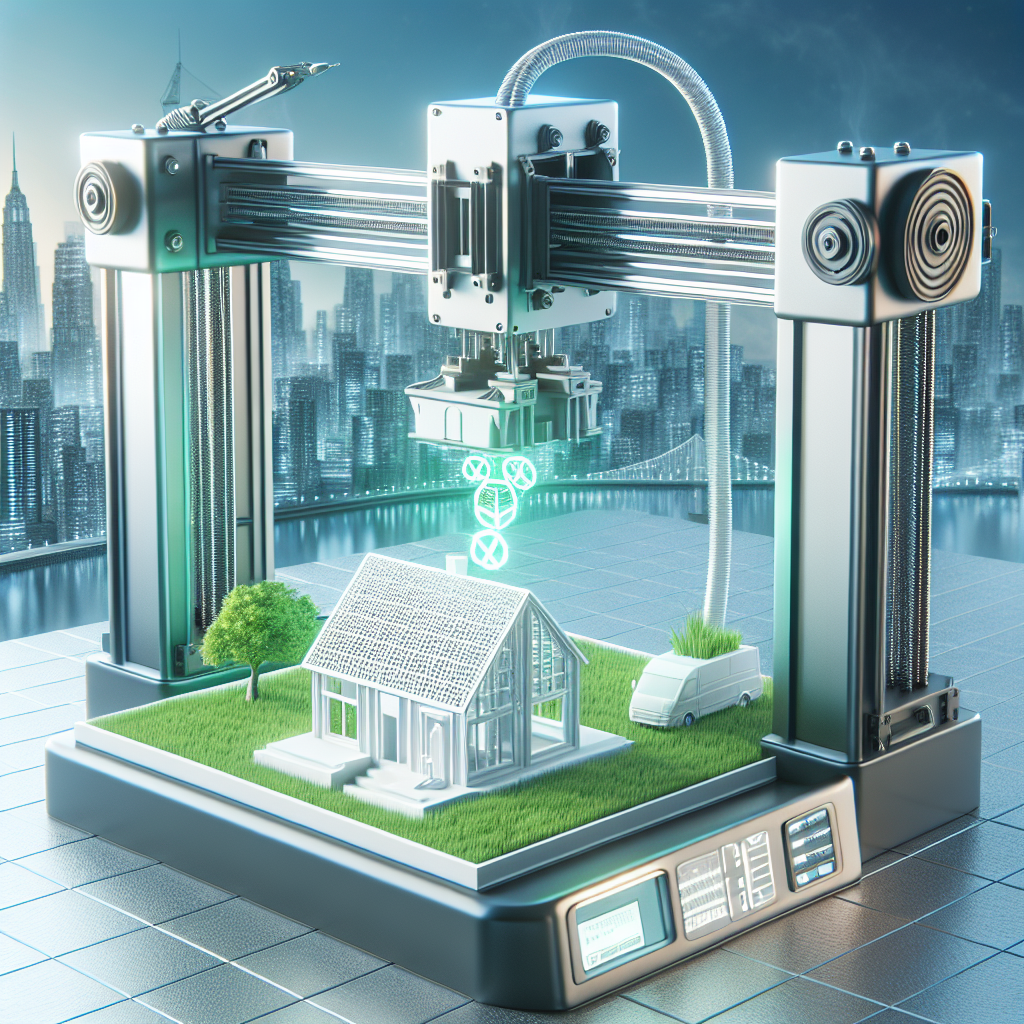3D Printing Buildings: A Sustainable Revolution
In recent years, the construction industry has witnessed the rise of 3D printing, a technological innovation that promises to redefine traditional building methods. This groundbreaking approach not only streamlines the construction process but also offers a beacon of hope for sustainable development. As the world grapples with the urgent need for eco-friendly practices, 3D printing in construction emerges as a transformative solution, potentially revolutionizing how we conceive, design, and erect structures. This article delves into the essence of 3D printing buildings and explores its implications for a sustainable future.
The Genesis of 3D Printed Buildings
3D printing, or additive manufacturing, involves creating three-dimensional objects by adding material layer by layer, following a computer-generated blueprint. This technology, which initially found applications in manufacturing small-scale models and parts, has scaled up to the level of constructing entire buildings. Specialized 3D printers, equipped with nozzles that extrude building materials such as concrete, work meticulously to bring digital designs to life. This process allows for the creation of complex, bespoke shapes with precision, opening new vistas in architectural design and construction.
The Green Promise
One of the most compelling aspects of 3D printing buildings is its potential for sustainability. This technology addresses several environmental concerns inherent in traditional construction methods:
1. Reduced Material Waste: 3D printing is inherently efficient, using only the necessary amount of material to create structures, thus significantly reducing waste. This precision ensures that resources are conserved, aligning with the principles of sustainable development.
2. Energy Efficiency: The process can lower energy consumption compared to conventional construction techniques. By optimizing material usage and reducing the need for transportation and heavy machinery, 3D printing minimizes the carbon footprint of building projects.
3. Sustainable Materials: There is ongoing research and development into using recycled materials and natural, biodegradable resources for 3D printing. This innovation could further diminish the environmental impact, promoting a circular economy in the construction sector.
4. Enhanced Design Flexibility: The technology allows for designing structures that optimize energy use, such as maximizing natural light or improving thermal efficiency. This design flexibility can significantly reduce a building’s energy requirements over its lifetime.
Implementation and Challenges
The adoption of 3D printing in construction is growing, with projects ranging from residential homes to commercial buildings showcasing its viability. Countries like the Netherlands, China, and the United States have already seen the completion of 3D printed structures, symbolizing a shift towards broader acceptance of this technology.
However, several challenges need to be addressed to fully realize its potential. Regulatory hurdles, material durability, and the initial cost of 3D printing technology are significant concerns. Additionally, there is a need for skilled labor trained in these new construction techniques, implying a shift in the workforce’s skillset.
Despite these obstacles, the benefits of 3D printed buildings—especially their sustainability advantages—present a compelling case for overcoming these challenges. Governments, industries, and academia are increasingly investing in research to tackle these issues, paving the way for a more sustainable construction paradigm.
Future Perspectives
Looking ahead, 3D printing in construction holds the promise of not just sustainable building practices but also the democratization of housing. By reducing costs and construction time, this technology could play a pivotal role in addressing the global housing shortage and making sustainable homes accessible to a broader population.
Moreover, the adaptability of 3D printing technology makes it an ideal tool for disaster relief efforts, where rapid, efficient, and sustainable construction is crucial. The potential for creating customized, resilient structures on-demand could significantly improve emergency shelter and rebuilding efforts.
FAQs
Q: How long does it take to 3D print a building?
A: The time varies depending on the project’s complexity and size. Some small houses can be printed in just 24 hours of print time, spread over several days.
Q: Is 3D printed housing safe?
A: Yes, when adhering to building codes and using appropriate materials, 3D printed houses can be as safe as traditional homes. Ongoing research and testing aim to further enhance their safety and durability.
Q: Can 3D printed buildings be customized?
A: Absolutely. One of the greatest strengths of 3D printing technology is its ability to create highly customized designs at no additional cost.
Q: Are 3D printed buildings more affordable than traditional buildings?
A: Initially, the cost might be comparable or slightly higher due to the technology’s novelty. However, prices are expected to decrease as the technology becomes more widespread, making it a cost-effective option in the long run.
Q: What materials are used in 3D printing buildings?
A: Concrete is the most common material, but researchers are exploring the use of other sustainable options, including recycled plastics, wood composites, and even materials derived from natural sources like algae.
Conclusion
The advent of 3D printing in the construction industry heralds a new era of sustainable development. By offering significant environmental benefits, reducing waste, and promoting energy efficiency, this technology aligns closely with the goals of eco-friendly construction. Despite facing challenges, the potential of 3D printing to revolutionize the building sector is undeniable. As we continue to explore its capabilities, 3D printed buildings stand poised to redefine our approach to construction, making the dream of sustainable living a tangible reality.

